Learning how to read piano sheet music effectively is one of the most valuable skills for any pianist, whether you’re a beginner or an advanced player. Reading sheet music fluently opens doors to playing a vast range of compositions, enhances musical understanding, and makes your piano journey far more rewarding.
At Sound Artist, we’ve covered everything from beginner piano tips to piano finger exercises, and in this guide, we’ll dive deep into strategies, tools, and exercises that will help you become confident in sight-reading and interpreting sheet music.
Why Learning to Read Piano Sheet Music Matters
Before we get into how to practice reading piano sheet music, let’s address why it’s essential:
-
Access to More Music – Sheet music provides a universal language, enabling you to play works across genres and centuries.
-
Better Musical Understanding – Reading notation enhances knowledge of rhythm, harmony, and musical structure.
-
Improved Technique – Regular reading practice trains your brain, fingers, and eyes to coordinate more efficiently.
-
Sight-Reading Skills – Helps you play music accurately without lengthy memorization.
Common Challenges in Reading Piano Sheet Music
Many beginners find piano hard because of a few common challenges:
-
Reading notes on both the top (treble) and bottom (bass) lines.
-
Understanding rhythms and timing.
-
Using both hands together smoothly.
-
Playing with expression, like volume changes and phrasing.
If you notice these problems early, you can focus your practice on fixing them.
Step-by-Step Guide: How to Practice Reading Piano Sheet Music Effectively
Here’s a systematic approach to mastering sheet music reading:
1. Start with the Basics
-
Learn the treble and bass clefs (the two staves).
-
Memorize note names for all lines and spaces.
-
Understand key signatures and sharps/flats.
-
Get familiar with time signatures (how the rhythm works).
-
Read our article Understanding Musical Notation to build a solid foundation.
2. Practice Daily with Short Exercises
-
Dedicate 10–15 minutes daily just to reading notes.
-
Use flashcards or apps like Tenuto to practice note recognition.
-
Practice rhythm clapping before playing.
3. Use Sight-Reading Books
Method books like Four Star Sight Reading or Piano Adventures offer progressive exercises that build skill.
-
Begin with simple one-line melodies.
-
Gradually increase complexity with hands-together practice.
4. Break Down the Music
-
Look it over first: Check the key, time, repeats, and dynamics before you start playing.
-
Divide it into small parts: Practice 2–4 measures at a time.
-
Hands separately: Learn left and right hands on their own, then play them together.
5. Keep a Steady Tempo
-
Don’t stop for mistakes. Train your eyes to keep moving.
-
Use a metronome to maintain rhythm.
-
Start slower and gradually increase speed.
Explore our guide on Using a Metronome Effectively.
6. Strengthen Pattern Recognition
Most piano music consists of scales, arpeggios, and chords.
-
Learn to spot intervals and chord shapes instantly.
-
Practice scales and arpeggios daily.
7. Apply Slow Practice
-
Play slowly enough to avoid mistakes.
-
Accuracy comes before speed.
-
Slowly connect small sections into longer phrases.
8. Record and Review Yourself
-
Use your phone or recording device.
-
Listen for rhythm accuracy, dynamics, and fluency.
-
Identify weak spots to improve.
9. Practice Reading Different Styles
-
Classical, jazz, pop, and contemporary scores.
-
Each style enhances rhythm and phrasing awareness.
10. Be Consistent
-
A little daily practice is better than a long weekly session.
-
Consistency trains your brain to recognize patterns faster.
Table: Effective Piano Sheet Music Practice Techniques
|
Technique |
Description |
Benefit |
|
Flashcards/Apps |
Quick note drills |
Faster recognition of notes |
|
Rhythm Clapping |
Clap rhythms before playing |
Builds rhythmic accuracy |
|
Hands-Separate Practice |
Play one hand at a time |
Improves focus and coordination |
|
Chunking |
Break score into small sections |
Makes complex music manageable |
|
Metronome Use |
Play with steady beat |
Enhances timing and flow |
|
Style Variations |
Practice different genres |
Broadens musicality |
Extra Tips to Improve Faster
-
Write on your music – Note fingerings or tricky parts with a pencil.
-
Sing the notes – Helps you remember pitches and rhythms.
-
Look ahead – Watch one measure ahead while playing.
-
Set realistic goals – Play accurately first, then worry about speed.
FAQs on How to Practice Reading Piano Sheet Music
1. How long does it take to get good at reading piano sheet music?
With consistent practice, beginners can achieve basic fluency in 3–6 months. Mastery takes years but improves steadily.
2. Should I memorize or always read music?
Both are valuable. Memorization builds confidence, but strong reading skills allow you to learn new pieces faster.
3. Is sight-reading the same as reading sheet music?
Sight-reading means playing music for the first time without prior practice. Reading sheet music refers to interpreting notation with or without preparation.
4. How many minutes should I spend daily on sheet music reading?
10–20 minutes of focused practice daily is more effective than occasional long sessions.
5. What are the best apps to improve note reading?
Apps like Tenuto, Simply Piano, and Sight Reading Factory are highly recommended.
Final Thoughts
Learning how to practice reading piano sheet music effectively requires patience, consistency, and the right strategies. Start with the basics, practice daily, and gradually increase complexity. With dedication, you’ll soon find that sheet music becomes less intimidating and more of an exciting gateway to music.
At Sound Artist, we’re committed to helping you grow as a musician. Be sure to explore our other resources, such as:
With the right mindset and approach, you’ll unlock the joy of playing music straight from the page, making your piano journey more enjoyable and fulfilling.




